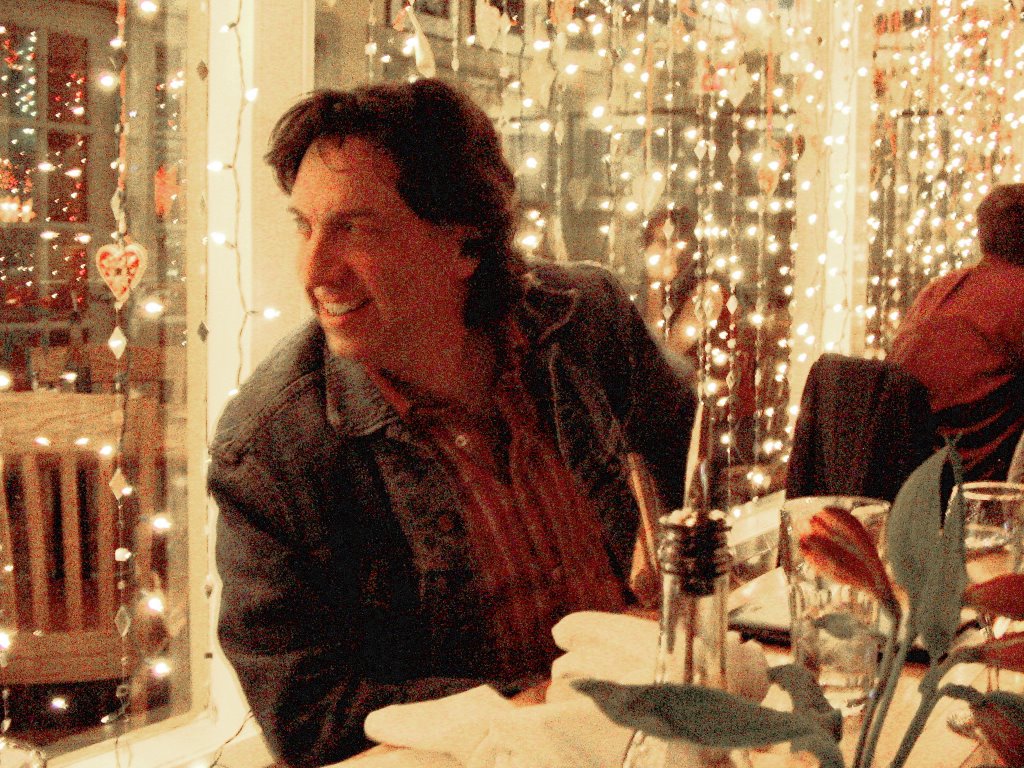How Do You Want to be Remembered?
On the banks of the Colorado there’s a bronze statue of Stevie Ray Vaughan overlooking a wide, level park dotted with live oaks and pecans. Stevie wears a big bronze poncho and a flat–topped bronze cowboy hat, and his bronze guitar stands upright by his side, his fingertip touching the tip of its neck. His long shadow, and that of his guitar, is cast in bronze on the marble base, but this Sunday noon there is no sun–cast shadow, just bright radiance on all the world. A woman sits at the edge of the statue and asks into her phone, “Does he have a new girlfriend?” A passerby says, “I wish I had a poncho like that.”
The new path, with its well–planned overlooks and clean green benches, cuts past a disused power plant and a tributary creek littered with cardboard signs and sleeping bags. Concrete blocks and cylinders, obscure in function, rise from the ground, with rusted cut–off cables twisting from them. Along a bicycle railing, half a dozen colorful paintings stand—one of them a painting of this very scene—not bad, though of course not good enough. The artist stands far back under a tree, scowling through dark glasses, as hundreds of pedestrians and bicyclists pass by. How would he act if someone bought one?
By the littered creek, a young man in a tight–fitting knit cap walks back and forth, muttering to himself, sometimes picking up a dry reed or a soggy stick and putting it down in a new place. When we approach, he turns his back and steps into the shadow of the exit staircase, staring angrily at its concrete wall.
A couple in sweatsuits are stretching their limbs at the bicycle rail: the man, finishing, slaps the woman on the buttocks to hurry her, and she grins and keeps on stretching in the endless daylight. It’s a day when everything seems alive—windows, bicycles, ripples of water, how can they not be alive with all this sun on them? A country singer on a passing radio rocks out: “We’re happy doin’ what we’re doin’/ We’re happy ‘cause we’re doin’ it right.” The anonymous session guitarist rips out a solo, tangy as barbecue sauce, furious with joy, note rising after note toward the shining blue sky, rising and rising and rising. When the notes enter it, the transparent blue turns solid as a monument, and for exactly long enough the solo lasts forever.
The new path, with its well–planned overlooks and clean green benches, cuts past a disused power plant and a tributary creek littered with cardboard signs and sleeping bags. Concrete blocks and cylinders, obscure in function, rise from the ground, with rusted cut–off cables twisting from them. Along a bicycle railing, half a dozen colorful paintings stand—one of them a painting of this very scene—not bad, though of course not good enough. The artist stands far back under a tree, scowling through dark glasses, as hundreds of pedestrians and bicyclists pass by. How would he act if someone bought one?
By the littered creek, a young man in a tight–fitting knit cap walks back and forth, muttering to himself, sometimes picking up a dry reed or a soggy stick and putting it down in a new place. When we approach, he turns his back and steps into the shadow of the exit staircase, staring angrily at its concrete wall.
A couple in sweatsuits are stretching their limbs at the bicycle rail: the man, finishing, slaps the woman on the buttocks to hurry her, and she grins and keeps on stretching in the endless daylight. It’s a day when everything seems alive—windows, bicycles, ripples of water, how can they not be alive with all this sun on them? A country singer on a passing radio rocks out: “We’re happy doin’ what we’re doin’/ We’re happy ‘cause we’re doin’ it right.” The anonymous session guitarist rips out a solo, tangy as barbecue sauce, furious with joy, note rising after note toward the shining blue sky, rising and rising and rising. When the notes enter it, the transparent blue turns solid as a monument, and for exactly long enough the solo lasts forever.



<< Home